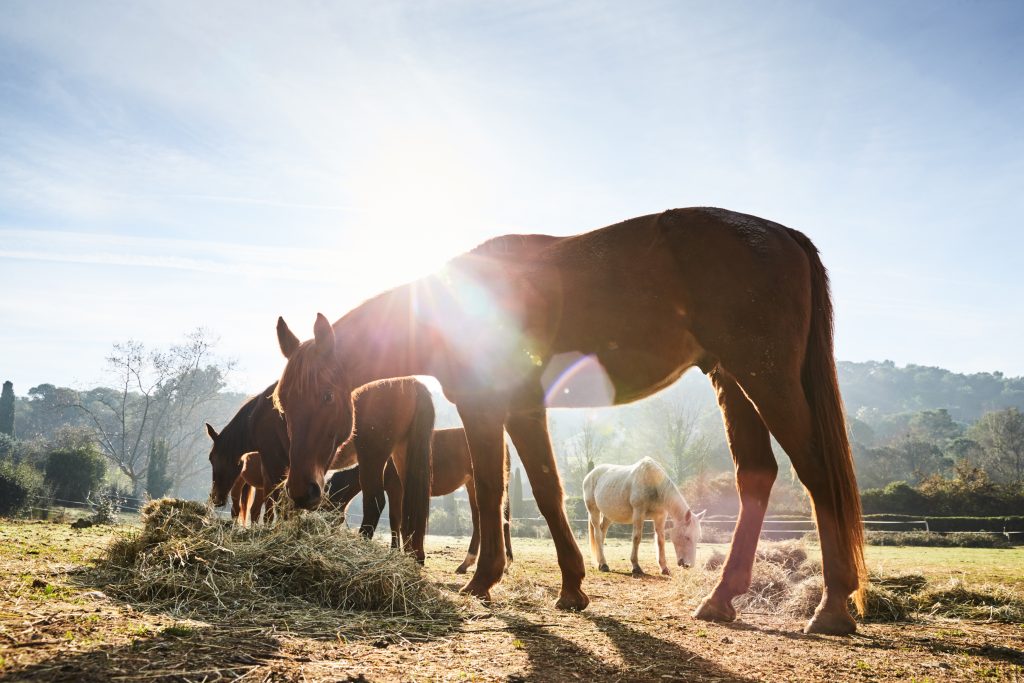Dr David Wood BVSc, MRCVS
Not all horses are ‘Warmbloods” but they are all warm blooded animals so when the ambient temperature falls they need to use more energy to maintain their natural body temperature in the face of those cold conditions. By selecting different energy sources, we can either help or hinder them in their efforts to keep warm in winter, or cool in summer.
When energy is liberated from different feeds during digestion, a proportion of it is lost as waste heat released by the digestive process itself. This heat produces what is called the “Thermal Load” and varies for different classes of energy source. Fibre has the highest thermal load and fat the lowest, with starch and sugars in between.

Feeding more hay in cold conditions takes advantage of this thermal side effect and helps generate some spare heat to help keep them warm. It’s the fibre content of hay which helps generate heat during digestion, so the quality need not be top grade. Other high fibre feeds like beet pulp or soy hulls will also do the trick. Cold weather especially combined with wind chill can significantly increase energy demand. For example, broodmares wintering out in cool temperate regions may need the energy equivalent of an extra 1kg-2kg of grain simply to maintain body weight. Whilst oil is a great energy source it won’t add to the thermal load during digestion like fibre and is less suited to this purpose except for horses which are starch intolerant.
Shelter, rugs and blankets can reduce heat loss by 10% to 25%. Offering warm water as opposed to water just above freezing helps encourage drinking, as well as reducing further loss of body heat. Free choice hay in combination with these other tips will help your horse stay warm this winter.

